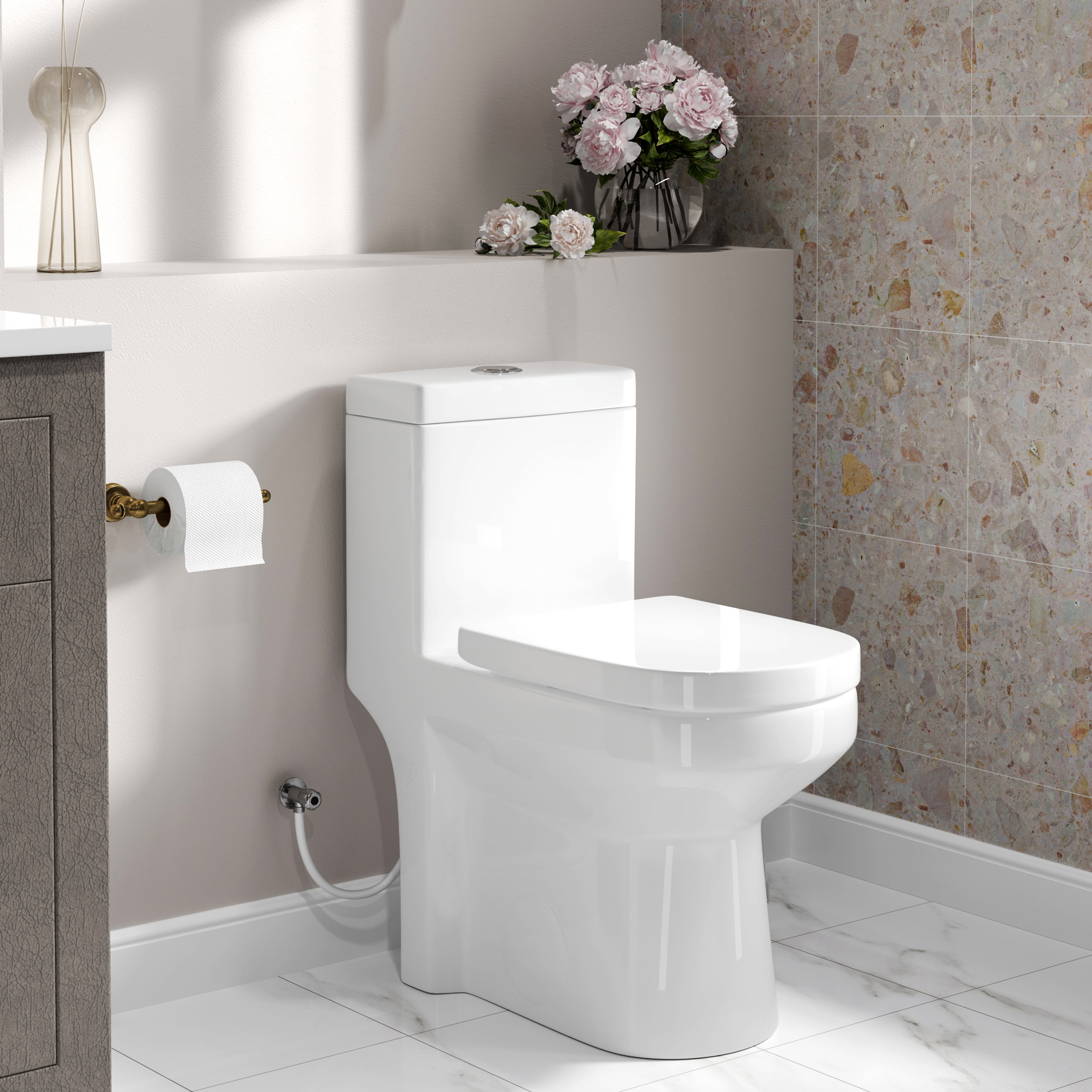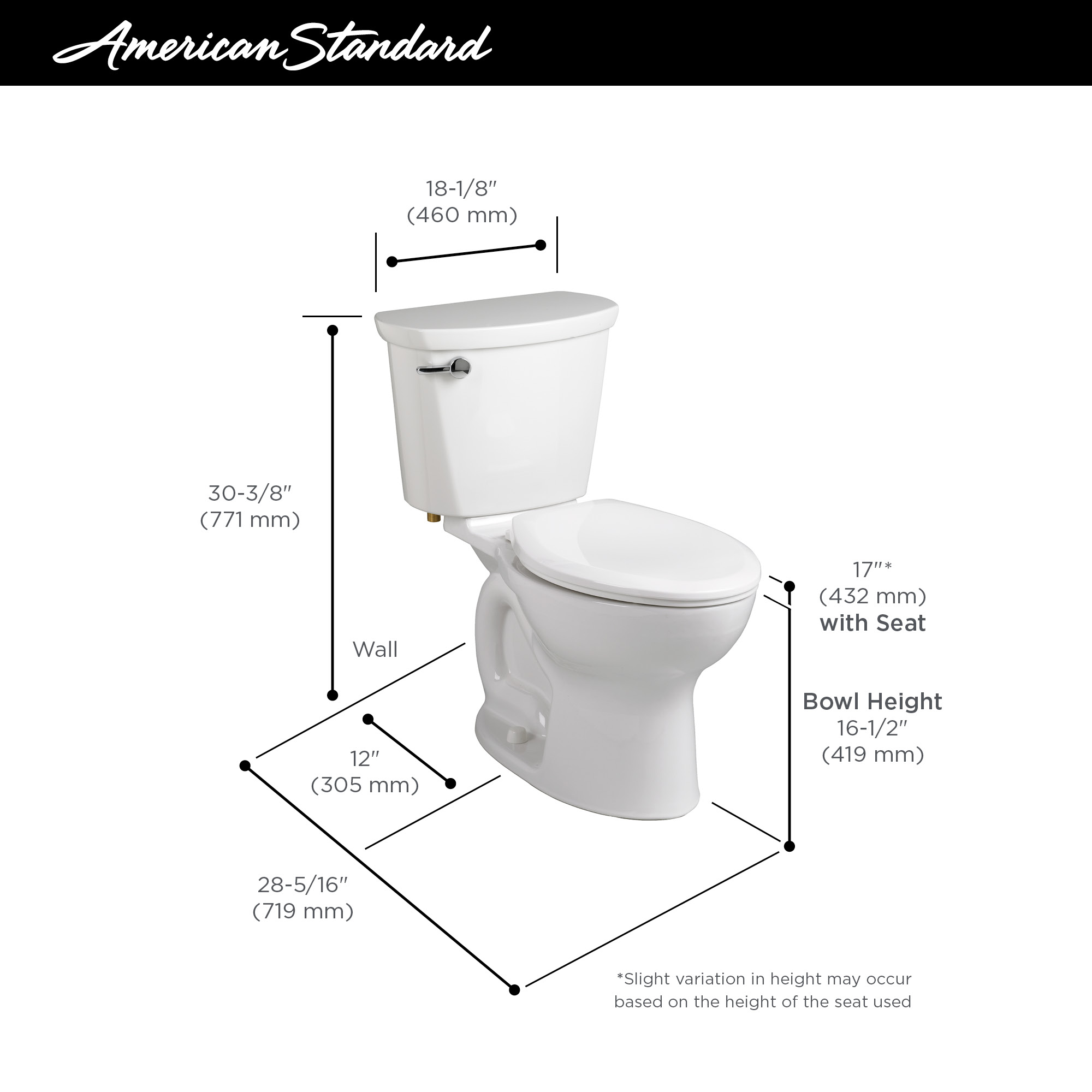Choosing the Right Toilet for a Small Bathroom
A small bathroom can feel cramped and cluttered, especially if you’re working with limited space. The right toilet can make a big difference in maximizing your bathroom’s functionality and aesthetics. Choosing a space-saving design is crucial for small bathrooms, as it can help to create a sense of openness and spaciousness.
Types of Toilets for Small Bathrooms
There are several types of toilets that are ideal for small bathrooms. These toilets are designed to minimize their footprint, making them perfect for maximizing space.
| Type | Features | Pros | Cons |
|---|---|---|---|
| Compact Toilets | Smaller bowl and tank, often with a round bowl shape. | Save valuable floor space, available in various styles. | May have a smaller water capacity, potentially requiring more flushes. |
| Wall-Mounted Toilets | The tank is concealed behind the wall, leaving only the bowl visible. | Create a sleek and modern look, free up floor space, easier to clean. | Require more complex installation, may be more expensive. |
| Dual-Flush Toilets | Offer two flush options: a full flush for solid waste and a half flush for liquid waste. | Save water, provide flexibility in flush volume, can be compact. | May be more complex to operate, not all models are compact. |
Maximizing Space with Toilet Placement
The placement of your toilet can significantly impact the overall feel of your small bathroom. Here are some tips for maximizing space:
* Consider a corner toilet: This can free up valuable floor space and create a more open feel.
* Install a wall-mounted toilet: This option can help to create a more spacious and airy bathroom.
* Use a toilet with a smaller footprint: Compact toilets are designed to minimize their footprint, making them ideal for small bathrooms.
* Maximize wall space: Use wall-mounted shelves, mirrors, and storage solutions to keep your bathroom organized and clutter-free.
Benefits of a Smaller Toilet Footprint
A toilet with a smaller footprint can offer several benefits for small bathrooms:
* Increased floor space: This can make your bathroom feel more spacious and less cluttered.
* Improved accessibility: A smaller toilet can be easier to navigate, especially for people with mobility issues.
* Enhanced aesthetics: A smaller toilet can create a more streamlined and modern look in your bathroom.
Maximizing Functionality in a Small Bathroom: Toilet For Small Bathroom

A small bathroom doesn’t have to feel cramped or lack functionality. With smart design choices, you can create a space that is both efficient and stylish.
Design Ideas for a Small Bathroom
Small bathrooms present unique challenges, but they also offer opportunities to get creative with design. By prioritizing functionality, you can create a space that is both practical and aesthetically pleasing. Here are some design ideas to consider:
- Utilize vertical space: Install tall cabinets, floating shelves, and mirrors to maximize vertical space. This allows you to store items out of sight and create a sense of openness.
- Embrace a minimalist aesthetic: A minimalist approach can make a small bathroom feel larger. Opt for clean lines, simple fixtures, and a neutral color palette.
- Choose a light and airy color scheme: Light colors reflect light, making a small bathroom feel more spacious. Consider using white, cream, or pale blue for walls and fixtures.
- Maximize natural light: If possible, position your bathroom near a window. If you don’t have a window, consider adding a skylight or installing a mirror to reflect existing light.
- Use reflective surfaces: Mirrors can create the illusion of more space and make a small bathroom feel brighter. Consider adding a large mirror above the sink or on a wall.
Common Design Challenges in Small Bathrooms and Solutions
Small bathrooms often face challenges related to limited space and storage. Here are some common design challenges and practical solutions:
- Limited Storage Space: Utilize every inch of space by incorporating clever storage solutions. This could include:
- Floating shelves: Install floating shelves above the toilet or sink to create additional storage space without taking up floor area.
- Under-sink cabinets: Choose a vanity with built-in storage or add a separate under-sink cabinet to store toiletries and cleaning supplies.
- Towel racks: Install towel racks behind the door or on the wall to keep towels organized and easily accessible.
- Over-the-toilet storage: Utilize the space above the toilet with a shelf or cabinet to store extra towels, linens, or toiletries.
- Limited Floor Space: Consider using a space-saving toilet, such as a wall-mounted toilet, which can free up valuable floor space.
- Limited Counter Space: Choose a vanity with a smaller footprint but ample storage. You can also install a floating shelf above the sink to create additional counter space.
The Importance of Storage Solutions
Efficient storage is crucial in a small bathroom. A well-organized bathroom is easier to maintain and makes it feel more spacious. Here’s why storage solutions are important:
“A well-organized bathroom creates a sense of calm and serenity, making it a more enjoyable space to use.”
- Minimizes clutter: Storage solutions help keep toiletries, cleaning supplies, and other bathroom essentials organized and out of sight, reducing clutter and creating a more visually appealing space.
- Maximizes space: By using vertical space and incorporating under-sink cabinets, floating shelves, and other storage solutions, you can maximize every inch of your bathroom, making it feel larger and more efficient.
- Enhances functionality: Storage solutions make it easier to find what you need quickly, improving the overall functionality of the bathroom.
Designing a Small Bathroom Layout that Optimizes Storage Space and Flow
Creating a functional layout for a small bathroom involves careful planning. Here’s how to optimize storage space and flow:
- Consider the flow of movement: Plan the layout so that you can move easily around the bathroom. For example, ensure there is enough space to open the door and access the toilet, sink, and shower.
- Maximize storage in key areas: Utilize the space above the toilet, under the sink, and behind the door for storage. Consider adding shelves, cabinets, or drawers to these areas.
- Choose a space-saving toilet: A wall-mounted toilet or a compact toilet model can save valuable floor space.
- Prioritize essential items: When deciding what to store, prioritize items that are used frequently and eliminate unnecessary items.
Essential Accessories for a Small Bathroom
Adding the right accessories can enhance the functionality and aesthetics of a small bathroom. Here are some essential accessories:
- Shower Caddy: A shower caddy can help organize shampoos, conditioners, and other shower essentials, keeping them within easy reach.
- Toilet Brush and Holder: A toilet brush and holder are essential for maintaining a clean bathroom. Choose a compact and stylish option to save space.
- Soap Dish: A soap dish is essential for keeping soap bars dry and clean. Choose a dish that matches the style of your bathroom.
- Toothbrush Holder: A toothbrush holder keeps toothbrushes organized and prevents them from coming into contact with other surfaces.
- Wastebasket: A small wastebasket is essential for disposing of trash. Choose a wastebasket that fits discreetly in a corner or under the sink.
- Vanity Mirror: A vanity mirror is essential for applying makeup and grooming. Choose a mirror with a built-in shelf or a separate shelf to provide additional storage.
- Towel Bar: A towel bar provides a convenient place to hang towels and keep them off the floor.
- Shower Curtain: A shower curtain is essential for preventing water from splashing outside the shower area. Choose a shower curtain that complements the style of your bathroom.
Enhancing the Aesthetics of a Small Bathroom

A small bathroom doesn’t have to feel cramped and uninviting. With careful planning and a touch of creativity, you can transform it into a haven of style and functionality. The key is to leverage visual illusions and design elements that maximize the sense of space, while incorporating elements that add a touch of luxury.
Color Palettes and Materials, Toilet for small bathroom
Choosing the right color palette and materials is crucial in creating a visually appealing and spacious small bathroom. Light, airy colors like white, cream, and pale blues create a sense of openness and make the room feel larger. These colors reflect light, enhancing the sense of spaciousness.
- White is a classic choice for small bathrooms, as it reflects light and creates a clean, minimalist aesthetic.
- Creamy tones add warmth and sophistication while still maintaining a sense of spaciousness.
- Pale blues and greens evoke a calming and serene atmosphere, making the bathroom feel like a sanctuary.
When selecting materials, consider using reflective surfaces like polished tiles or glass to bounce light around the room. Glossy finishes on cabinets and countertops also contribute to a sense of openness. Avoid using dark colors or heavy materials, as they can make the space feel smaller and more oppressive.
Mirrors and Lighting
Mirrors are essential for enhancing the aesthetics of a small bathroom. They create the illusion of more space by reflecting light and doubling the visual size of the room. Strategically placed mirrors can also draw the eye upward, making the ceiling appear higher.
- A large mirror above the sink is a standard feature in most bathrooms, but consider adding additional mirrors to maximize the effect.
- Mirrors can be incorporated into the design of cabinets or even placed on the walls to create a sense of depth.
- Mirrored tiles can be used as an accent wall to add a touch of glamour and reflect light.
Adequate lighting is crucial for making a small bathroom feel inviting and spacious. Natural light is always ideal, so consider incorporating a window if possible. However, even without a window, you can create a well-lit space with strategically placed artificial light sources.
- Overhead lighting is essential for providing general illumination, but consider using multiple light sources to avoid harsh shadows.
- Recessed lighting can be used to highlight specific areas, such as the vanity or shower.
- Task lighting, such as sconces or under-cabinet lights, can be used to provide focused illumination for specific tasks.
Elements of Luxury
While a small bathroom might seem like a challenging space to create a luxurious feel, it is possible with a few key design elements.
- High-quality materials like marble, granite, or polished chrome fixtures add a touch of sophistication.
- Soft towels, plush rugs, and scented candles create a spa-like atmosphere.
- Plants can bring a touch of nature and freshness to the space, while also adding visual interest.
“Luxury is not about price tags, but about quality, attention to detail, and a sense of indulgence.”
